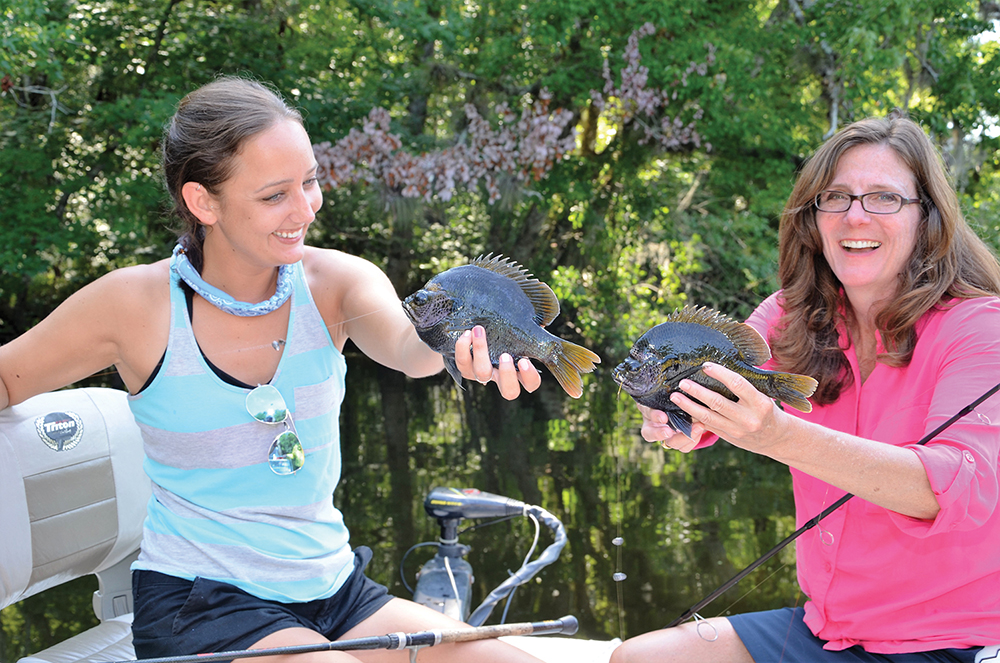Nothing attracts fish more than a mayfly hatch
One hot summer afternoon, we struggled to find fish — until we noticed some activity up ahead.
It was a sight any fly fisherman longs to see: Millions of mayflies covered bushes growing along a stretch of shoreline about 10 yards long. As if a million piranhas attacked a bleeding capybara, water boiled with fish of every description, annihilating anything that touched the water.
My fishing partner and I immediately whipped out our fly rods and dropped cork poppers into the ruckus. Unfortunately, a roaring wind made stopping to fish the honey hole impossible without an anchor or trolling motor. In addition, the ancient 12-foot aluminum boat leaked so badly that we had to bail it with a gallon milk jug about every 30 minutes just to stay afloat.
Fortunately, the wind blew parallel to the bank where we wanted to fish. We formulated a plan. I cranked up the also ancient 6-horsepower outboard and headed upwind while my buddy bailed the boat. We stopped far enough upwind so that we could get our gear ready for a quick drift.
 The brutal wind hurtled us past the bushes nearly as fast as the old motor could push us. As we shot past the strike zone, we each quickly made a cast or two, hoping we didn’t snag on anything. If the bug hit the honey hole, a big bluegill or other fish instantly blasted it. If the bug missed the sweet spot, nothing happened. After the wind pushed us beyond casting range, we bailed the boat again and ran upwind for another drift. We kept repeating that process until we grew tired of catching panfish – and bailing.
The brutal wind hurtled us past the bushes nearly as fast as the old motor could push us. As we shot past the strike zone, we each quickly made a cast or two, hoping we didn’t snag on anything. If the bug hit the honey hole, a big bluegill or other fish instantly blasted it. If the bug missed the sweet spot, nothing happened. After the wind pushed us beyond casting range, we bailed the boat again and ran upwind for another drift. We kept repeating that process until we grew tired of catching panfish – and bailing.
Also called willow flies in Alabama, mayflies spend most of their lives underwater as nymphs. As water warms, they sprout wings and emerge from the water to mate and die. Mayflies belong to the insect order Ephemeroptera, which means “lasting only a day.”
In freshwater systems across Alabama, mayflies “hatch” periodically from late April to about October. During a mayfly hatch, really just changing from a water nymph into a winged adult, these harmless insects swarm in the millions. After bursting from the water, adult mayflies somewhat resemble giant mosquitoes. They cling to branches to dry their new wings before mating. During a hatch, swarming flies might completely cover some low bushes. Inevitably, some flies fall into the water, kicking off a fish feeding frenzy.
Artificial flies or poppers offer more fun
Lucky anglers who stumble upon a bug hatch could find incredible action. When flies hit the water, everything comes quickly to grab its share of the bounty. Bluegills and other bream feed upon the insects floating on the surface. Bass also eat the bugs, but larger bass would more likely grab an overstuffed bluegill distracted by the swarming insects.
Near a good hatch, anglers can catch fish after fish with anything they throw into the water. However, for the most fun, use artificial flies or poppers. During a feeding frenzy, lure color doesn’t matter as much as placement. If it lands in the right spot, something will probably hit it, but flies that resemble the floating insects might work best. With poppers, keep changing colors and the fish should keep striking them. If the frenzy dies down, shake the bushes to make more flies fall into the water and reignite the activity.
I prefer floating cork poppers. Some foam or plastic temptations resembling crickets, grasshoppers or other creatures also work. Toss a popper as close to the fly-laden bushes as possible without snagging. If nothing hits it immediately, let the popper sit a moment and then give it a little twitch or pop to get a fish’s attention. Then, pause for several seconds to let the bug float on the water.
During a bug hatch, bluegills turn very aggressive and might smash anything floating on the surface before their cousins can grab it. This produces some incredibly exciting strikes. Pound for pound, or more appropriately ounce for ounce, nothing on a line can outfight an enraged bull bluegill.
One never knows exactly when or where a mayfly hatch might erupt, but news travels fast when it does happen. Look for bug hatches to occur in areas with slack water out of the current near high reeds, bushes or small trees growing next to or over the water.
Almost every freshwater lake or stream in Alabama holds abundant bream populations. On any of these waters, anglers might find a mayfly hatch during any warm month. Some better places to catch bluegills include the Tombigbee-Alabama-Mobile river system and associated waters, particularly around Demopolis, the Tennessee River lakes like Wheeler and Guntersville, Lake Eufaula on the Chattahoochee River, the Coosa River system, the Little River and the Tallapoosa River.
No matter how or where you catch them, a pan of golden fried bluegills makes a delicious meal for any fish lover.
John N. Felsher is a freelance writer and photographer who writes from Semmes, Ala. Contact him through his website at www.JohnNFelsher.com





